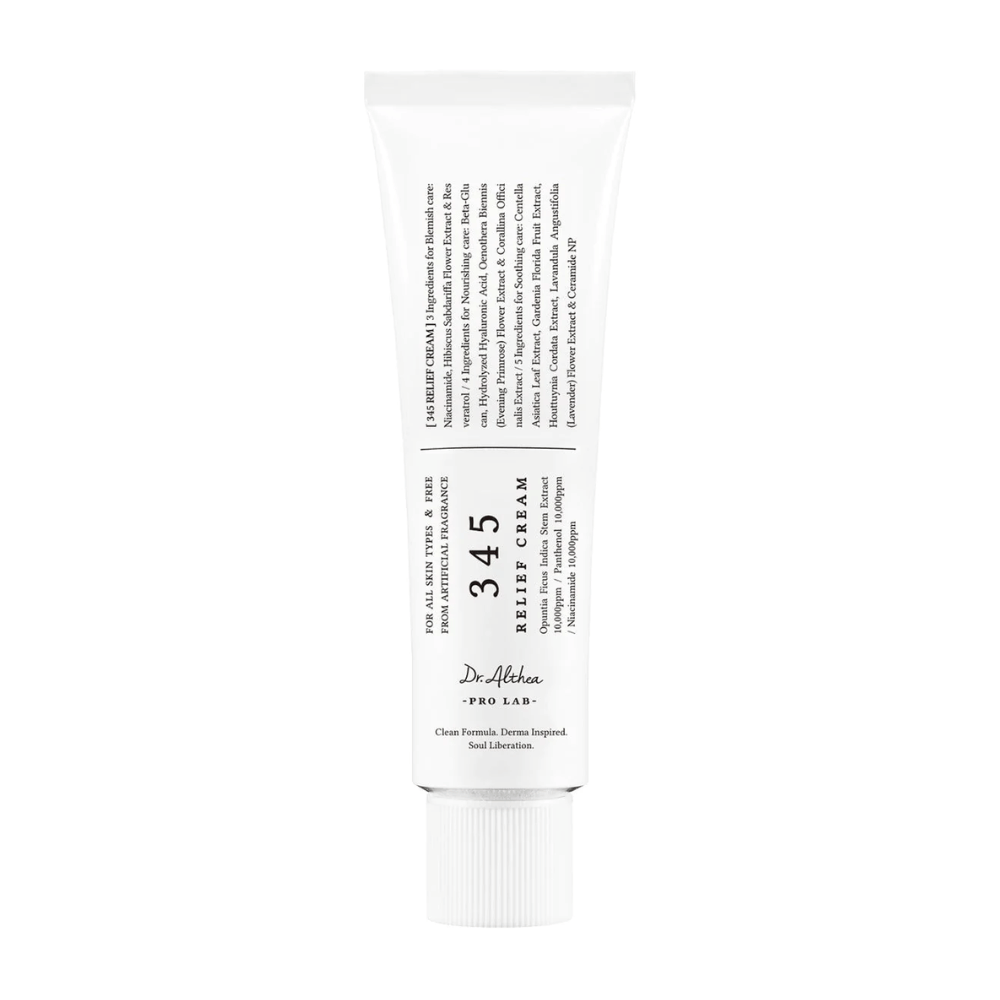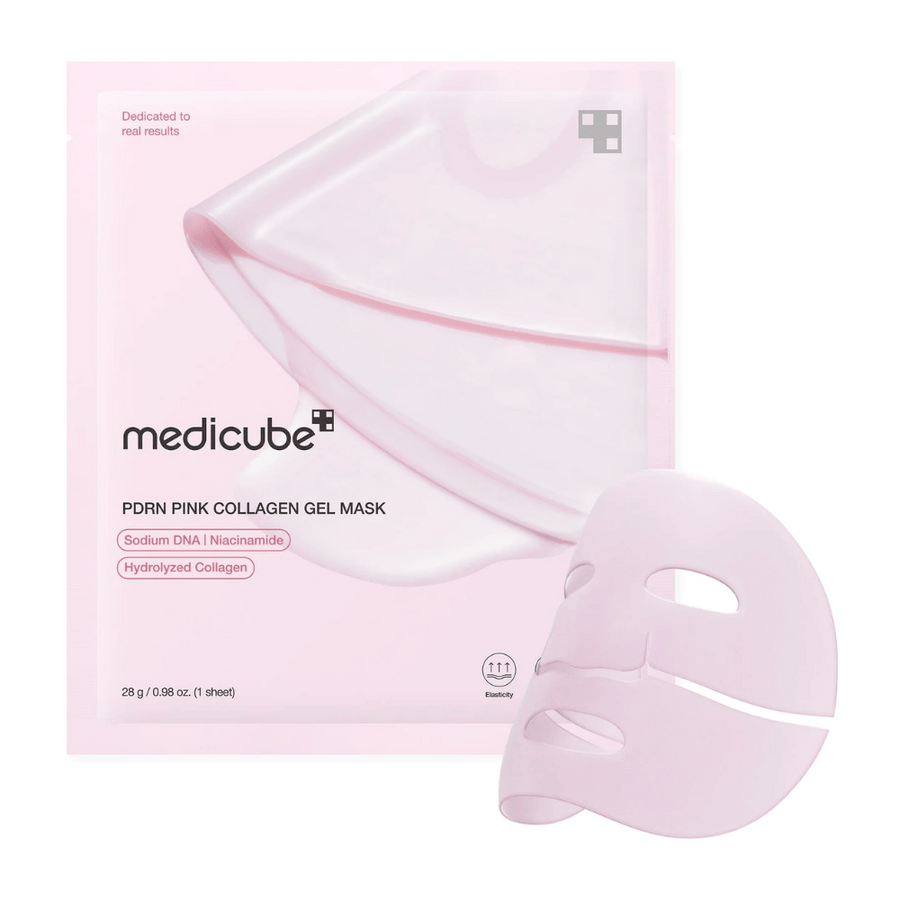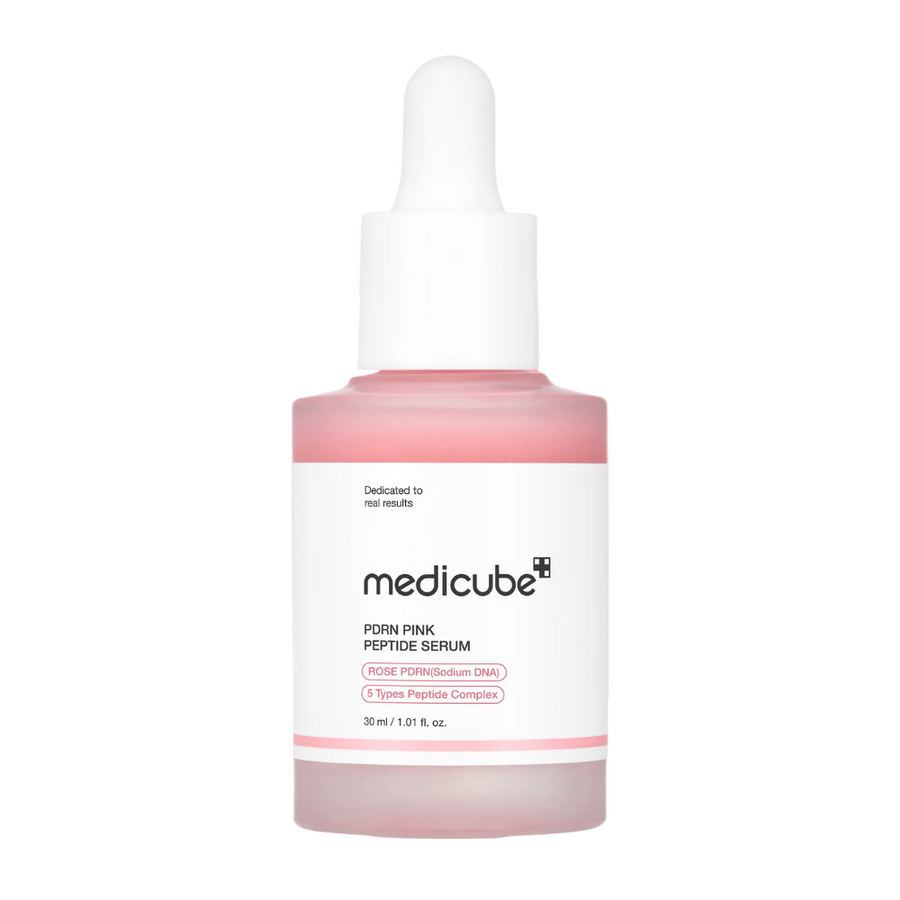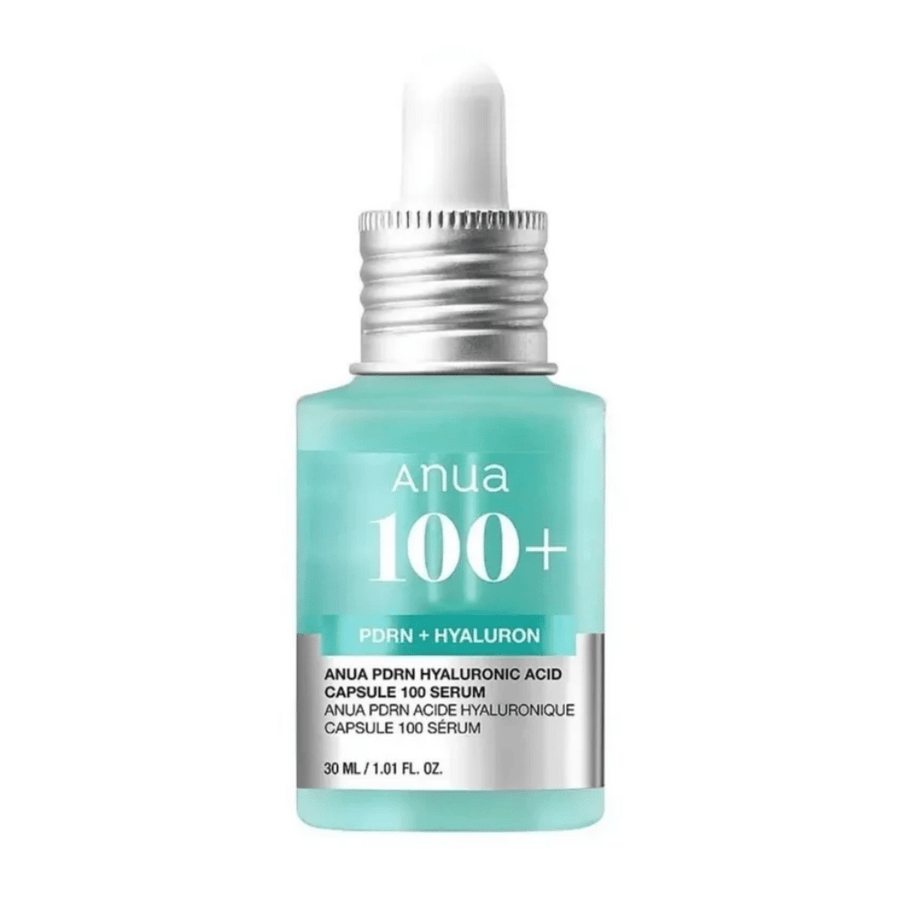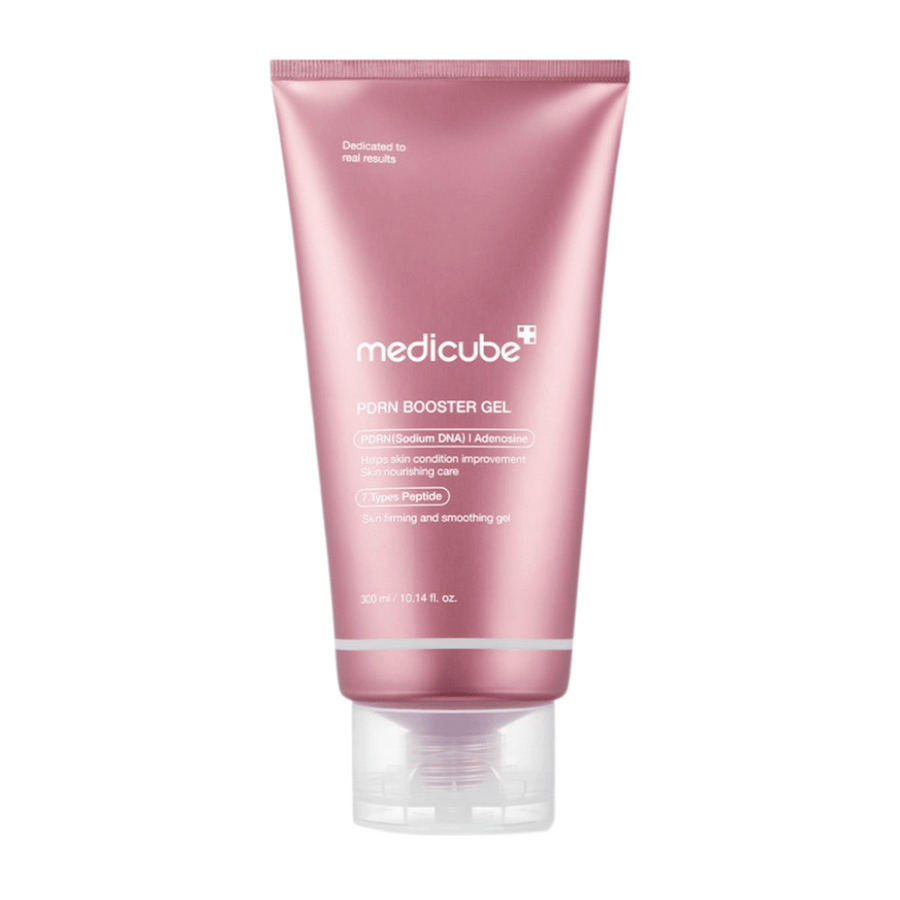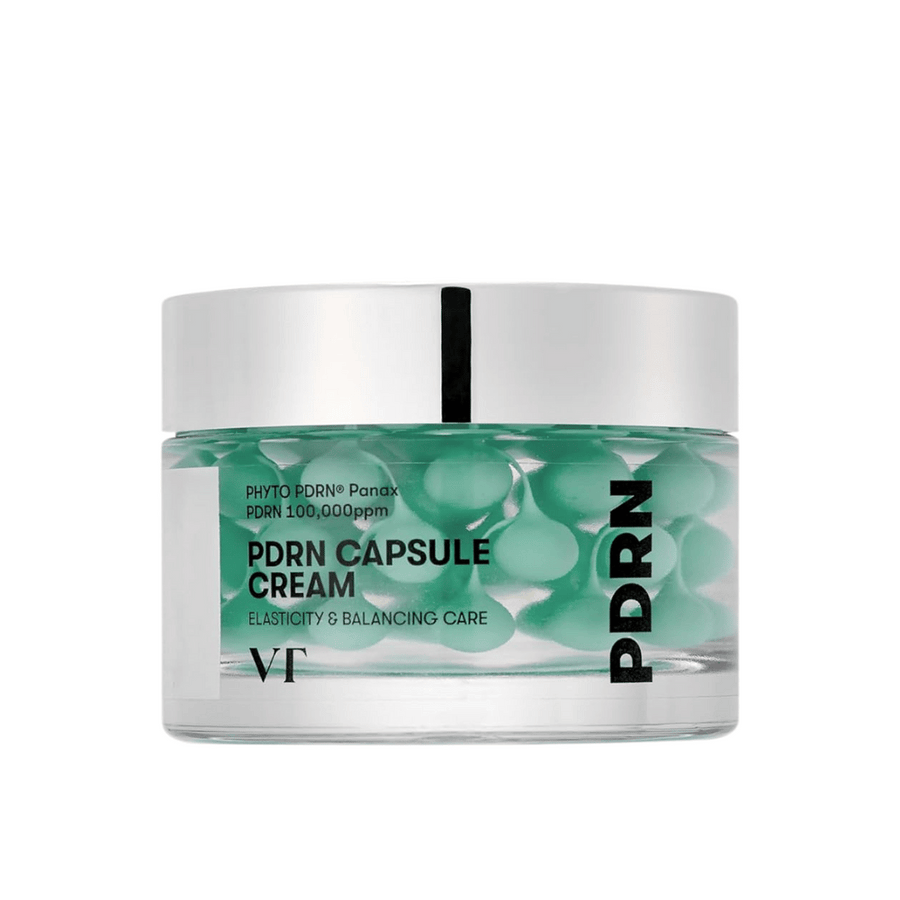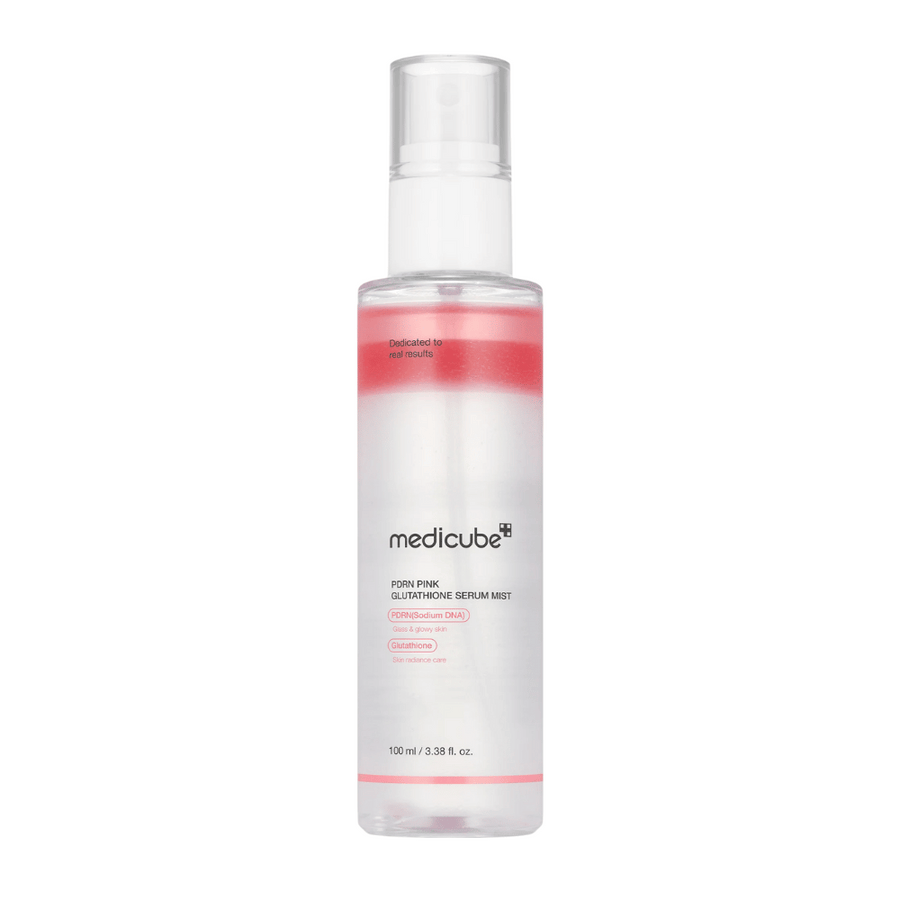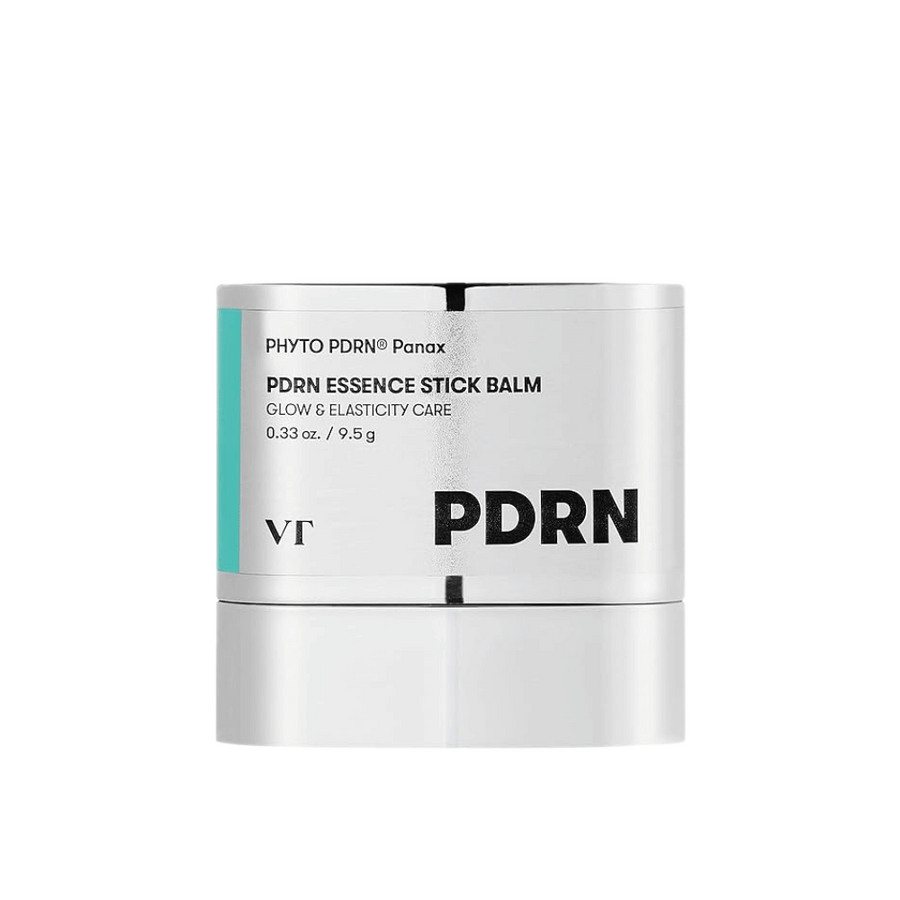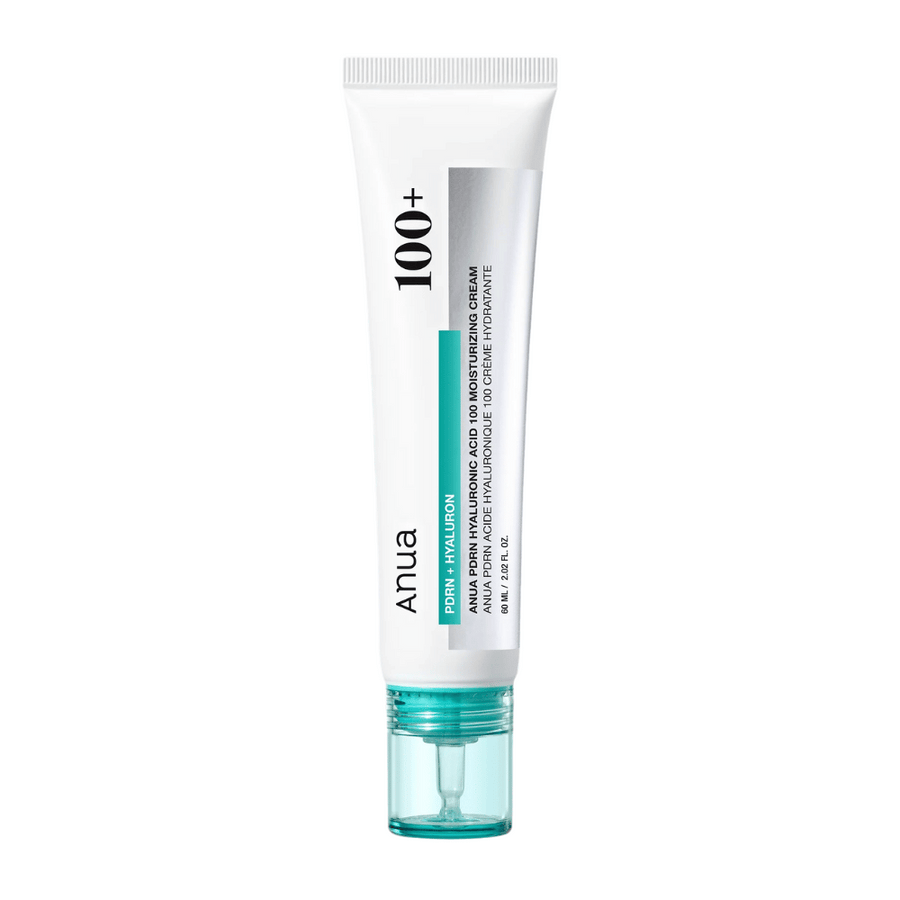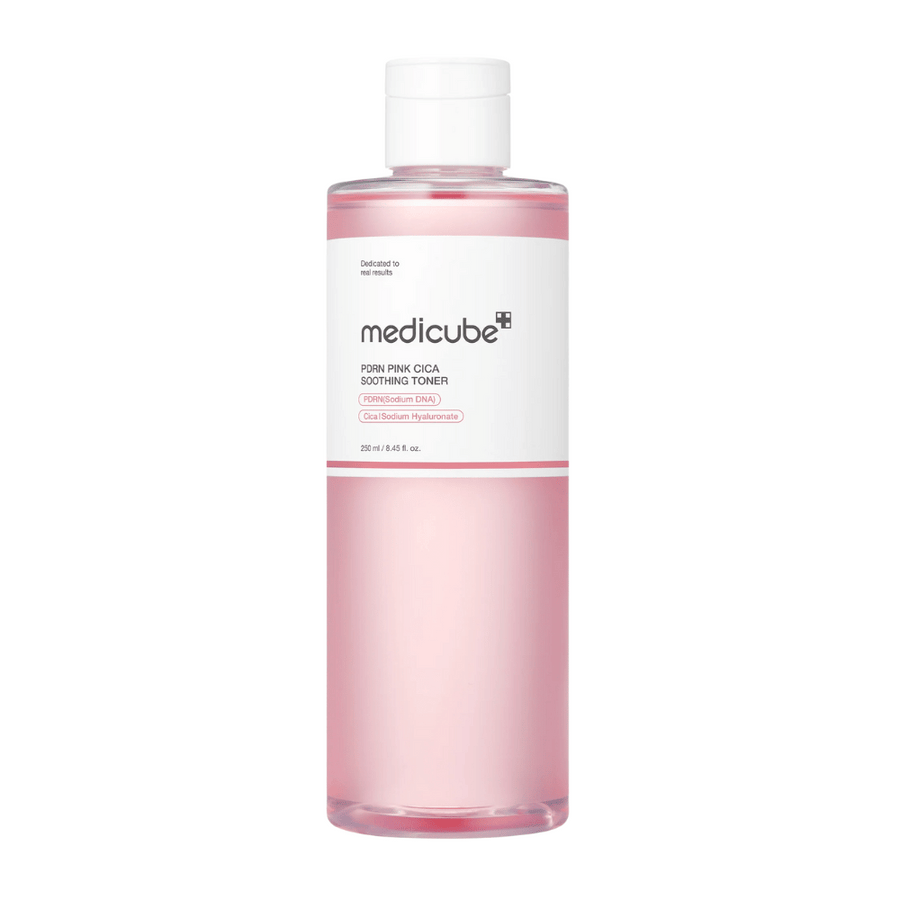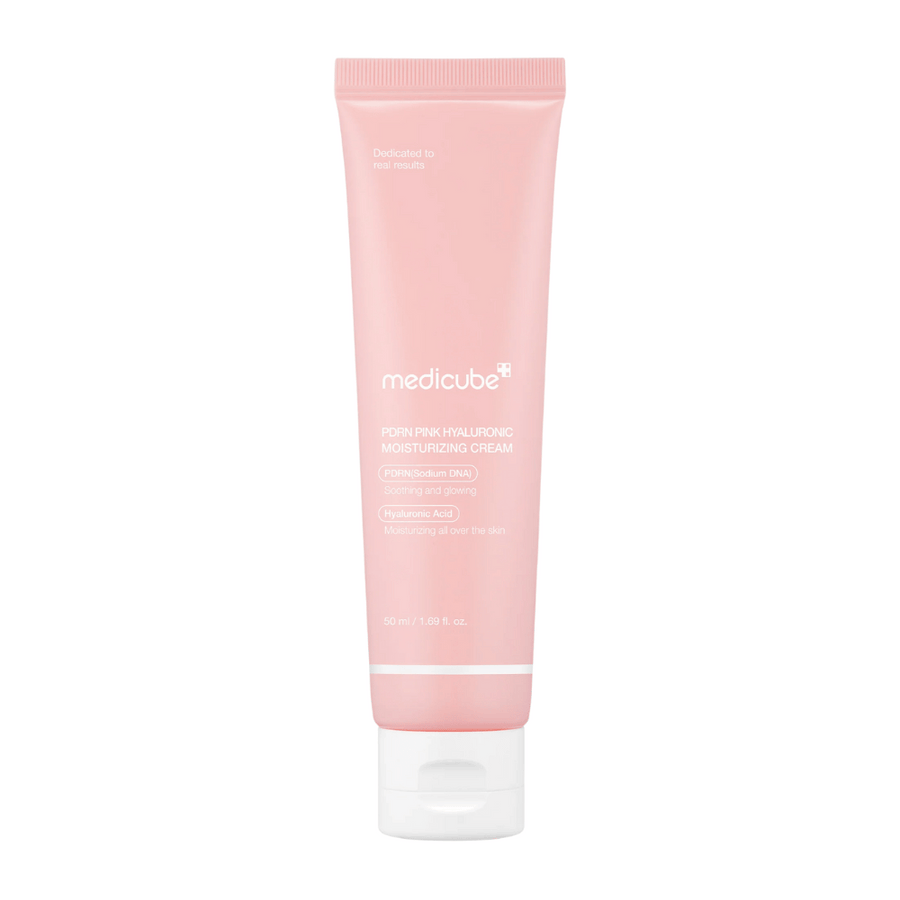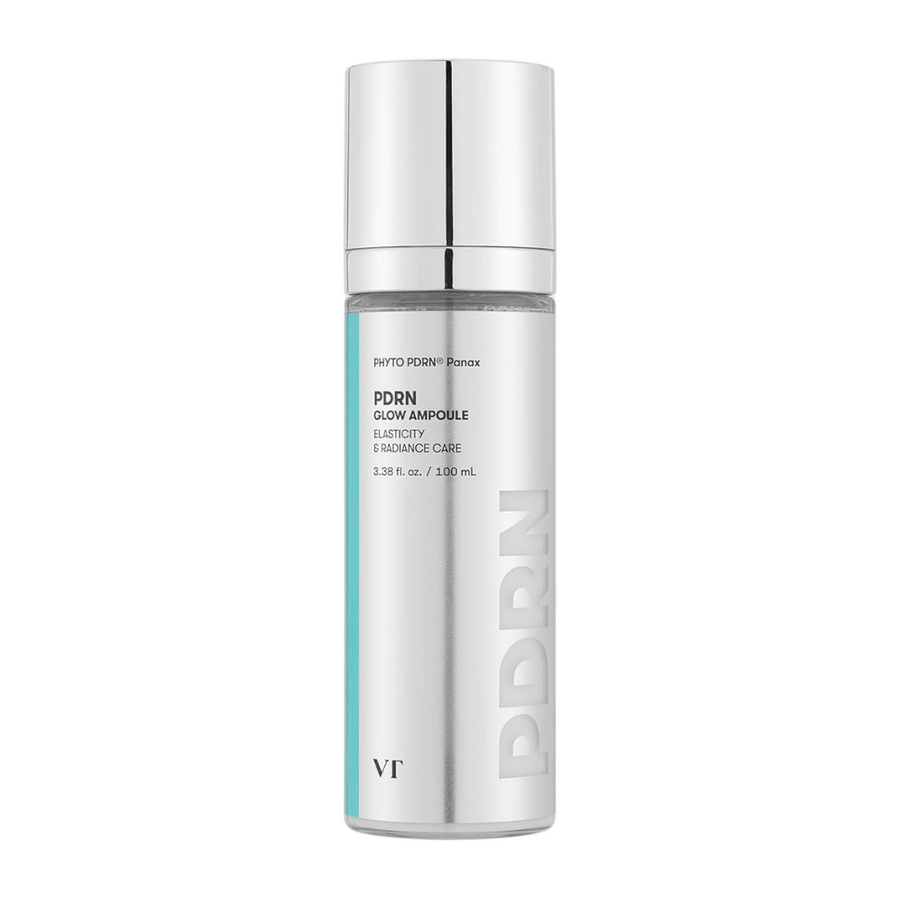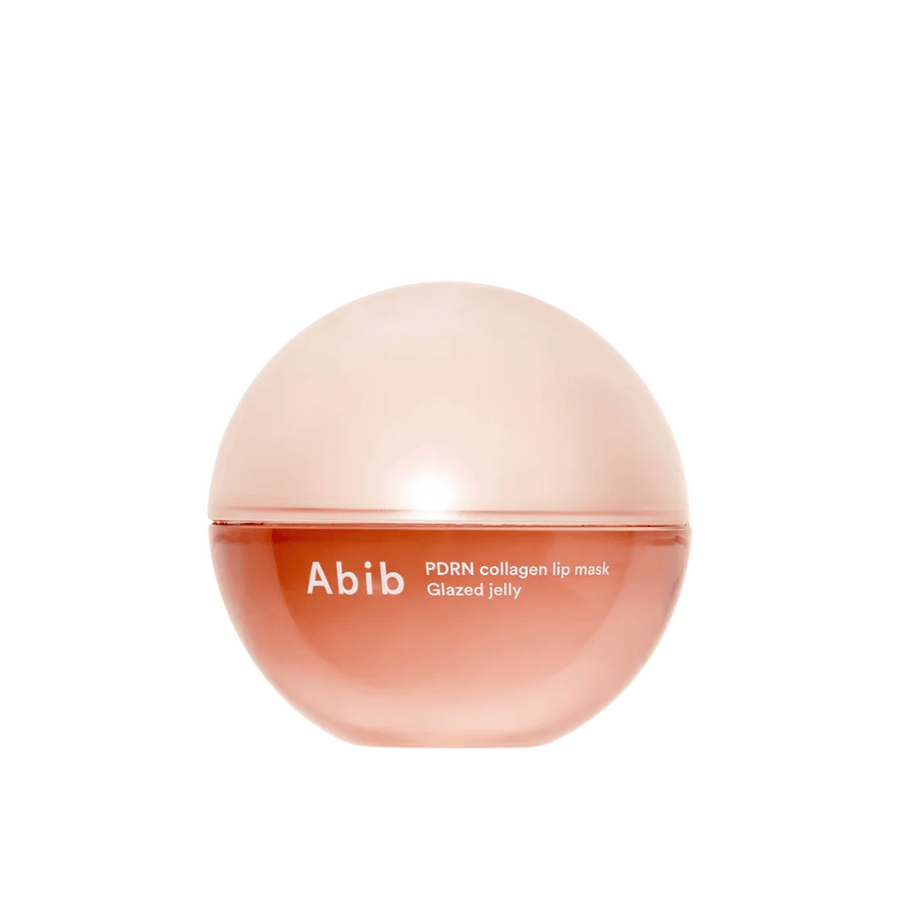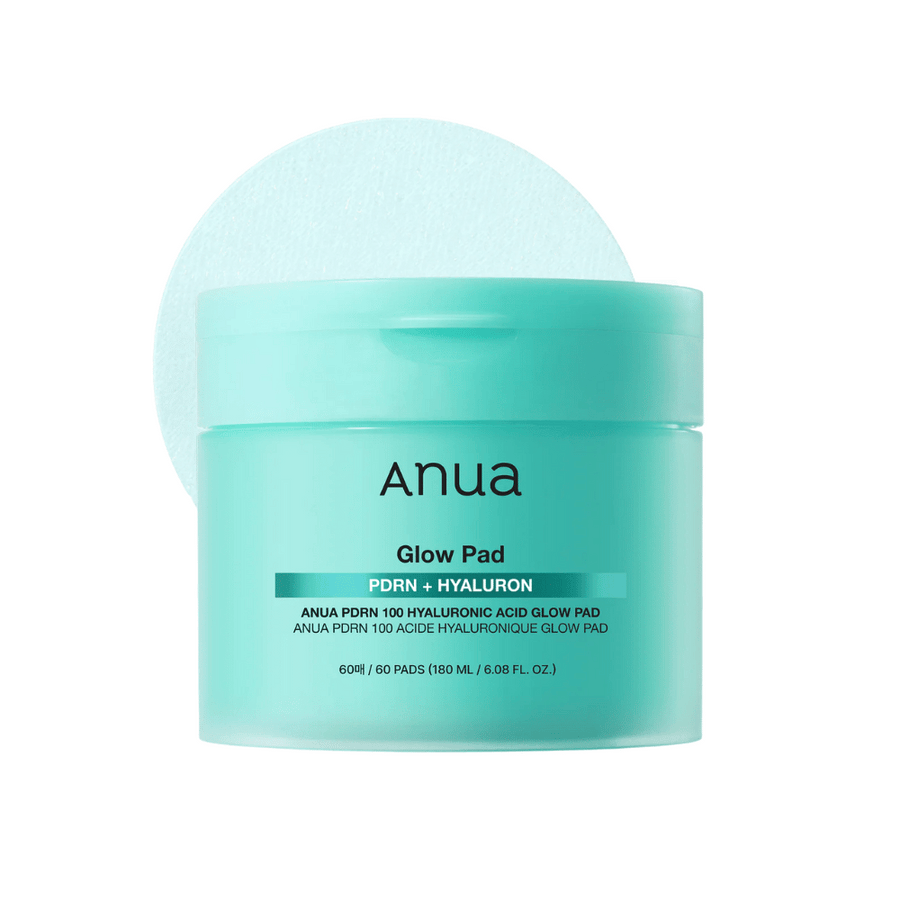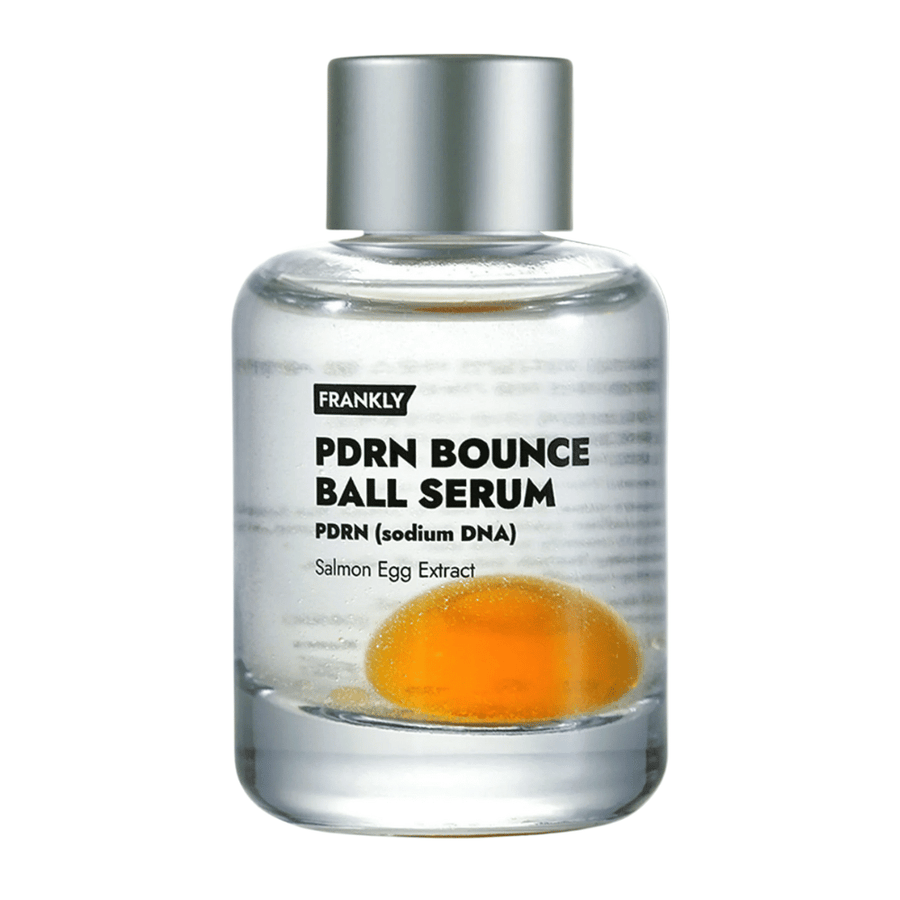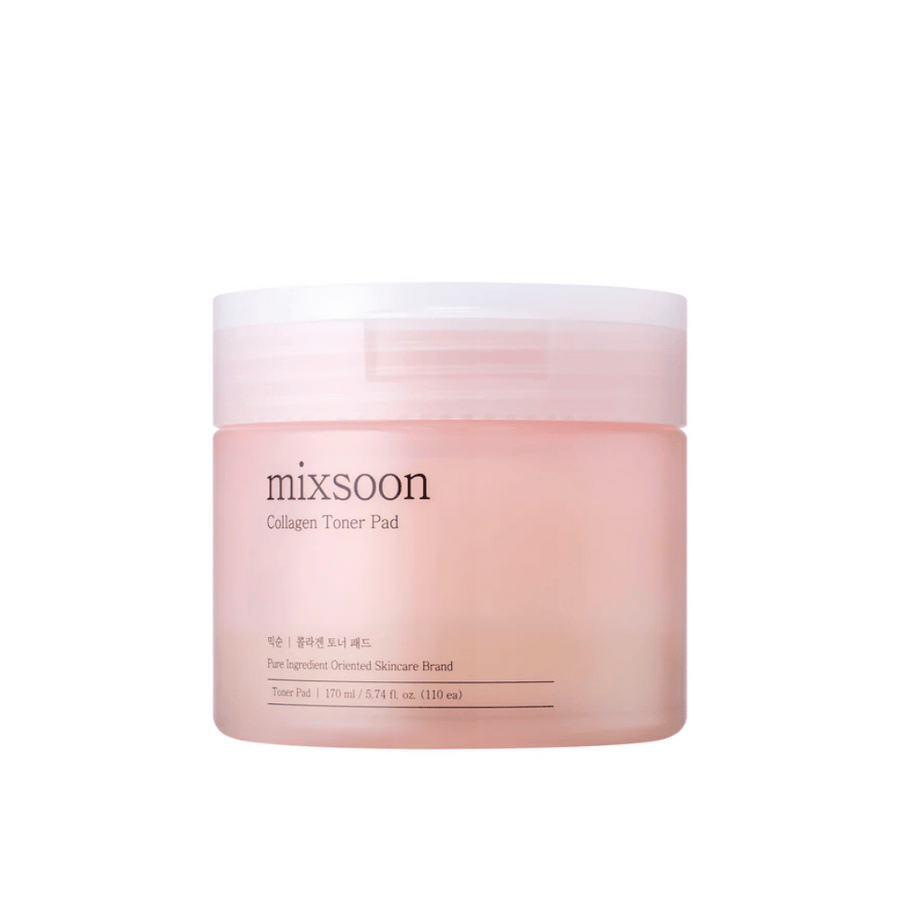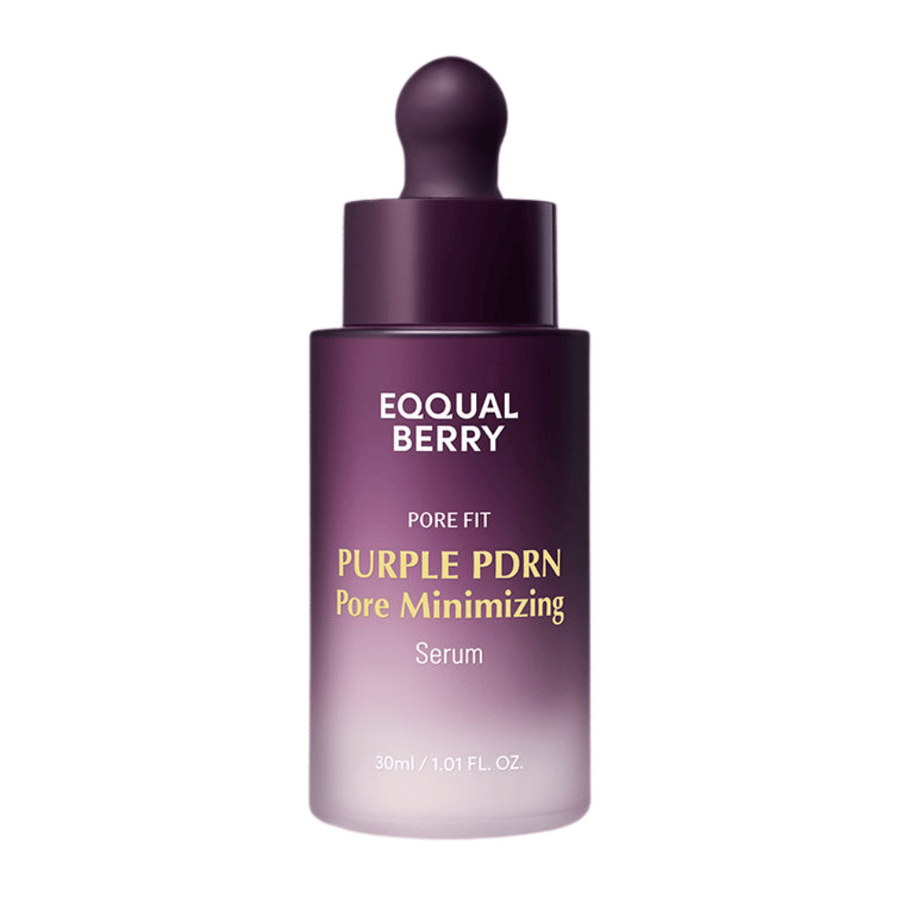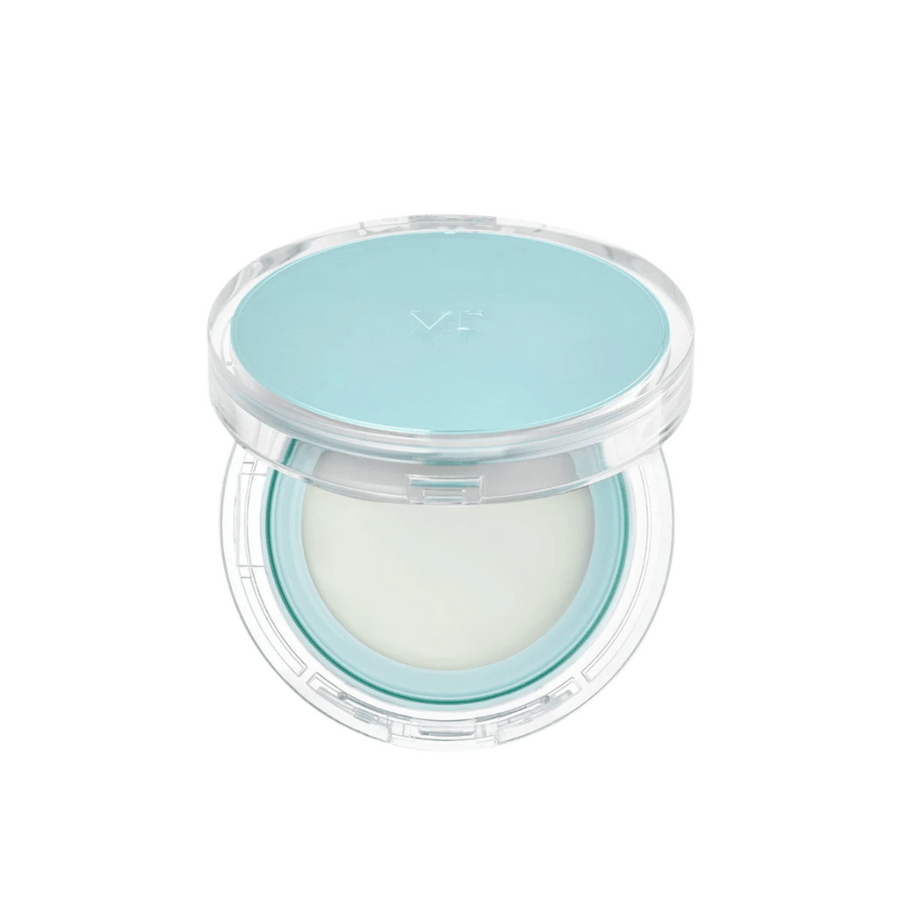
The latest trend PDRN, sometimes called “salmon DNA”, is praised for its anti-aging and skin-healing properties. PDRN has quickly become talked about among beauty enthusiasts for its ability to stimulate skin renewal, accelerate healing, and soothe sensitive skin. In the text below, we go through what PDRN is, how it works, and how you can benefit from it in your skincare routine.
What is PDRN?
PDRN stands for polydeoxyribonucleotide, a biotechnological extract consisting of DNA fragments. Typically, PDRN is extracted from salmon or other fish, one of the richest sources being salmon roe. Through an advanced purification process, the DNA fragments are isolated, resulting in a safe, active ingredient for skincare. In other words, PDRN is essentially small pieces of DNA that can be utilized by the skin to stimulate healing and cell renewal. For those who prefer to avoid animal ingredients, there is now also vegan PDRN produced synthetically, which mimics the natural properties of PDRN. Despite its origin in fish DNA, the end product is an odorless and colorless molecule added to skincare products for its unique biological effects.
How does PDRN work in skincare?
PDRN acts as a signaling molecule that triggers the skin's own repair processes. When PDRN is applied, the small DNA fragments are absorbed and send biochemical signals to the skin cells. It has been shown to stimulate fibroblasts, the cells that produce collagen, helping the skin maintain elasticity and firmness. At the cellular level, PDRN also activates specific receptors (adenosine A2A) that increase collagen production, reduce inflammation, and strengthen the skin barrier. The result is that the skin is stimulated to renew itself. PDRN promotes wound healing, counteracts tissue damage, and can subtly improve the skin's thickness and texture over time.
An interesting aspect is that PDRN is not entirely new; in aesthetic medicine, it has been used for several years. Originally, PDRN injections were used to treat hard-to-heal wounds and burns in hospitals. Today, PDRN is also found in beauty clinics, for example in the form of skin-rejuvenating injections (often called “salmon DNA injections”) that help the skin heal and stimulate collagen production from within. Especially in South Korea, injections with PDRN (e.g., Rejuran Healer) are popular for improving elasticity, smoothing out fine lines, and providing radiance with minimal irritation. These medical successes have paved the way for PDRN to now also be found in creams, serums, and other products for daily use.
Benefits of PDRN
PDRN has several documented skincare benefits thanks to its regenerative and anti-inflammatory properties.
Anti-aging and collagen boost
Stimulates collagen production in the skin and can thereby reduce fine lines and wrinkles. The skin becomes firmer and more elastic when it is helped to repair the structure from within.
Soothing and repairing
Has anti-inflammatory effects that reduce redness and irritation, making PDRN ideal for sensitive or stressed skin. The ingredient helps to repair damaged tissue and strengthen the skin barrier.
Moisturizing effect
Helps the skin maintain its moisture balance and prevents dehydration. Many find that the skin feels fuller and more "plump" with regular use of PDRN, thanks to improved barrier function.
Faster healing
Accelerates the skin's recovery from injuries. PDRN is often used after aesthetic treatments to promote wound healing and reduce downtime. This can mean that acne blemishes heal better and the skin's repair ability in cases such as sun damage or peeling is improved.
Together, these properties mean that PDRN can address a range of common skin problems. Its regenerating effect can over time help to even out acne scars and hyperpigmentation by supporting the skin's natural healing process. Additionally, users report an overall improvement in skin tone and radiance as inflammation decreases and the skin gains better structure.
Who should use products with PDRN?
A major advantage of PDRN is that it suits many skin types thanks to its mild profile. Here are some groups that may particularly benefit from the ingredient.
Mature skin
If you have aging skin with wrinkles or lost elasticity, PDRN can be a suitable ingredient in your skincare routine. Its collagen-stimulating and cell-renewing effect helps to firm the skin and reduce signs of aging.
Sensitive or damaged skin
PDRN is gentle and works well even for reactive skin. If your skin easily becomes red or if your protective barrier is weakened (e.g., with rosacea or after an injury), PDRN can soothe and strengthen the skin. In fact, PDRN was originally designed to heal damaged skin, so it is particularly suited for sensitive and compromised skin.
Dry skin
Thanks to its moisture-retaining ability, PDRN is excellent for those with dry or dehydrated skin. It helps to deeply hydrate and improve the skin's barrier, preventing moisture from evaporating. The result is smoother skin that feels less tight.
After aesthetic treatments
If you have undergone a treatment such as laser, chemical peeling, or microneedling, a PDRN product can help the skin recover faster. PDRN reduces redness and irritation after procedures and accelerates the healing process. Many dermatologists recommend PDRN-based products after treatment to strengthen the skin when it is most vulnerable.
Acne-prone skin
PDRN does not clog pores (non-comedogenic) and its anti-inflammatory action can calm breakouts. If you have acne or easily get blemishes, PDRN can help the skin heal pimples faster and reduce subsequent marks. Dermatologists have used PDRN even in acne-prone patients to improve healing and prevent acne scars.
In summary, PDRN is so mild that almost anyone can try it, but it is particularly appreciated by those with mature, dry, sensitive, or damaged skin.
Korean skincare and PDRN
It is within Korean skincare that PDRN has truly made its mark. Korean brands were early to include PDRN in various products, and the ingredient has become enormously popular in South Korea in recent years. In Korean skincare, you can find PDRN in everything from serums and ampoules to face creams and sheet masks. Especially products aimed at mature, dry, or sensitive skin in Korea started using PDRN diligently, in line with the K-beauty philosophy of repairing and strengthening the skin with gentle yet effective ingredients.
This trend is now spreading globally. By 2025, PDRN has been mentioned as a “viral” skincare news, and even Western beauty brands and clinics have started to take notice of the ingredient. K-beauty is often ahead when it comes to innovative ingredients, think of snail secretion, centella asiatica, or propolis, and PDRN is another example of an Asian trend now gaining traction in the West. The difference is that while Western skincare has traditionally focused a lot on active ingredients like retinol and acids, Korean skincare often emphasizes skin barrier and healing. Here, PDRN fits perfectly as a reparative anti-aging ingredient with minimal side effects. The Korean influence means we are likely to see even more PDRN on ingredient lists in the future, in everything from luxury serums to more everyday products.
Examples of products with PDRN
You can find PDRN in a variety of skincare products. Some common examples are the following.
Ampoules and serums
Highly concentrated liquid products that deliver PDRN deep into the skin. Serums or ampoules with PDRN are used to provide an intensive dose of the active DNA fragments and are often used daily for best results.
Face creams and essences
Face creams or lightweight essences enriched with PDRN provide a daily dose of skin repair while also hydrating. A PDRN cream can be used as the last step in the routine to lock in moisture and gradually improve skin elasticity.
Sheet masks
Sheet masks soaked in PDRN serum are popular for a weekly boost. They are placed over the face for anything from 15-20 minutes to 2-3 hours and provide the skin with a concentrated amount of PDRN along with other soothing ingredients. Perfect for quickly reducing redness and adding glow before a special occasion.
The fact that PDRN is available in so many formats makes it easy to integrate into the routine, whether you prefer a daily serum or an extra luxurious mask once a week. Look for terms like “PDRN”, “polynucleotide” or “Sodium DNA” on the ingredient list, the latter being a common designation for the DNA extract in product content.
How to use PDRN in your routine
How do you get the most out of this ingredient? Here is a brief summary for using PDRN products.
- When? You can use PDRN both in the morning and evening. The ingredient does not make the skin sun-sensitive, so a PDRN serum works just as well under your day cream/makeup as it does overnight. Regular use, preferably daily, gives the best results over time as PDRN works by gradually strengthening and repairing the skin.
- Step in the routine. Apply the PDRN product at the right place in your routine. Most commonly, PDRN comes in serum form, which means you apply it after cleansing (and toner/Essence) but before heavier creams or oils. This way, the active DNA fragments can penetrate the skin properly. If you are using a PDRN cream instead, use it as your final moisturizer.
- Combine with. PDRN works excellently with other moisturizing and barrier-strengthening ingredients. For example, you can apply a hyaluronic acid serum before or after PDRN for extra hydration, and ingredients like ceramides, panthenol, or centella asiatica complement PDRN's repairing effect. The combination of PDRN with such ingredients can provide a synergistic effect for a stronger skin barrier and more hydrated skin.
- Avoid... Although PDRN itself is mild, you should be cautious about mixing in strong active substances at the exact same time. For example, if you apply a PDRN serum, wait with exfoliating acids (AHA/BHA/PHA) or retinol until another step or use them at a different time of day. The reason is that the skin can become irritated if too many potent treatments are combined at once. Dermatologists point out that PDRN generally soothes the skin, but if mixed with strong acids, these can take over and cause irritation. So for best results, let PDRN do its job in peace and apply it on clean skin, let it absorb, and then continue with the next step after a few minutes.
- Patience. As with most skincare ingredients, PDRN does not provide overnight change. You may notice that the skin feels more hydrated and calm relatively quickly (within days to a couple of weeks), but the deeper improvements in the form of increased elasticity and smoother texture can take a few months of consistent use. Be patient and continue with your routine, the collagen-building effects will come gradually.
Frequently Asked Questions (FAQs)
Is PDRN safe for sensitive skin?
Yes. PDRN is very mild and well tolerated even by sensitive skin types. The ingredient was originally tested on damaged and sensitive skin (e.g., burns) and is used today to help compromised skin heal. It contains no strong acids or fragrances in itself, so the risk of irritation is low. If your skin is extremely sensitive, always introduce new products cautiously, but PDRN itself is considered safe even for rosacea-prone or reactive skin.
Is PDRN the same as salmon DNA?
In principle, yes. When talking about “salmon DNA” in skincare, it refers to PDRN. It is extracted from the DNA of salmon (often from salmon roe), so it is correct to call it a salmon-based DNA extract. The difference is that in a skincare product, PDRN is purified DNA fragments, not living cells. Some products list it as “Sodium DNA” in the ingredient list, but it is the same thing, a stabilized DNA extract. So yes, the terms PDRN, salmon DNA, and salmon DNA all refer to this ingredient.
Can PDRN be used every day?
Absolutely. There is nothing in PDRN that limits its use, on the contrary, daily use is recommended to achieve noticeable results. Since PDRN is so gentle on the skin can usually be used both morning and evening without problems. Topically PDRN generally poses a very low risk of side effects, so you don't need to "rest" the skin from it as you might need with stronger active ingredients. Continuous use ensures that the skin's renewal process is constantly supported, which can provide better effects over time.
Is PDRN suitable for acne-prone skin?
Yes, PDRN can be beneficial even if you have acne or are prone to pimples. The ingredient is non-comedogenic, which means it does not clog pores. Additionally, PDRN has anti-inflammatory properties that can soothe redness around breakouts. Dermatologists have used PDRN to treat acne-prone skin, precisely to promote healing and reduce inflammation without irritation. Remember that PDRN is not an acne medication in itself (it does not kill acne bacteria), but it can help the skin recover faster and reduce the risk of scarring after breakouts.
What is the difference between PDRN and EGF?
PDRN and EGF are both ingredients used for skin renewal, but they work in different ways. EGF (Epidermal Growth Factor) is a protein that binds to receptors on skin cells and directly stimulates cell division and renewal. It is used in skincare to accelerate the healing of, for example, wounds and improve skin texture by increasing cell turnover in the epidermis. PDRN, on the other hand, is not a protein but a collection of DNA fragments. PDRN works more indirectly. It triggers the cells' repair mechanisms and signals the body to send out its own growth factors and building blocks. Simply put, EGF delivers a "command" to the cells to regenerate, while PDRN provides "tools and signals" for the skin to repair itself. Both are good for anti-aging and skin health, but EGF works more on the surface cell renewal while PDRN works with deeper tissue healing and collagen production. Many skincare routines can benefit from both, EGF for quick cell turnover and PDRN for long-term healing and strengthened skin structure.
Does PDRN have any side effects?
For most people, PDRN causes no issues. The ingredient is low-risk and mild when used topically. You might possibly experience slight redness or a warm sensation immediately after application if the skin is already irritated, for example, if you use PDRN right after a powerful treatment like microneedling or acid peeling. But this redness is usually due to the treatment itself, not PDRN. On its own, PDRN tends to calm the skin rather than stress it. Of course, individual reactions can never be 100% ruled out (someone might be sensitive to the product's other ingredients), but overall there are no known serious side effects of PDRN serums or creams.
How quickly can you see results from PDRN?
PDRN starts working in the skin immediately, but the visible results come gradually. After a few weeks of daily use, you may notice that the skin feels smoother, more hydrated, and less prone to redness. Small wounds or blemishes may also heal somewhat faster than usual. The more long-term effects, such as improved elasticity and reduced fine lines, require a bit more time. Generally, it is said that it takes 8–12 weeks for collagen-stimulating treatments to show clear results, which also applies to PDRN. With continued use, the results can improve even further. So be patient and stick to the routine; your skin gradually gets more "building material" and signals to become stronger and smoother.
Are the fish harmed when extracting PDRN?
No, the process of producing PDRN does not need to harm the fish. PDRN is often extracted from salmon roe, and in practice, by-products from the fishing or food industry are used to obtain its DNA. According to experts, for example, salmon DNA is taken from salmon eggs, which means that the fish itself is not harmed at all. Furthermore, the increased demand has led to the development of synthetic alternatives (the same molecules but produced in a lab) so that animals can be completely avoided. If you care about animal welfare, you can look for labeling of vegan PDRN, which indicates that no fish products have been used. In the end, you get the skincare benefits from PDRN without having to worry, it is completely cruelty free.



